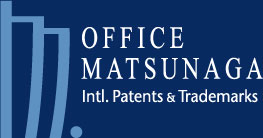| ¡ |
What is a transliterated trademark? |
| |
For instance, The Coca-Cola Company owns not only a famous registered trademark gCoca-Colah
but also the following transliterated trademarks of gCoca-Colah in phonograms
such as katakana, hiragana and kanji letters. These four (4) registered trademarks are common in pronunciation and similar
to each other.
| RN: 403281 |
RJR[ |
gCoca-Colah in katakana letters |
| RN: 403282 |
±©±[ç |
gCoca-Colah in hiragana letters |
| RN: 403283 |
ÃÁàæ
|
gCoca-Colah in kanji letters |
|
| ¡ |
Why the transliteration of a registered trademark is necessary? |
|
Because a trademark in alphabetical letters is not always easy for the
Japanese consumers to correctly pronounce it, especially in a case where
the trademark is differently readable. For the owner, it will be desirable
to specify how to read his trademark, and it will be preferable that his
trademark is uniformly read in the world. The transliteration grants these
owner's requests. |
| ¡ |
Is the transliteration of a trademark used on products and/or services? |
|
Yes, it is. Especially, the
transliteration written by katakana is practically and broadly used on the
relevant goods and/or services in Japan.
Depending on a case, the sales agents in Japan may ask the owner to register
the transliterated mark in katakana letters because of its usefulness. |
| ¡ |
Is it necessary to register the transliterated trademark under the Law
in Japan? |
|
No, it is not
compulsory to register the transliteration as a trademark. But,
it is strongly recommendable
to register it in katakana or
other Japanese phonograms because it apparently functions
as a trademark. Since the
original is registered like in the case of gCoca-Colah and its owner is an applicant, the registrability of
the transliterated trademark is very high. |
|
(TM) |
